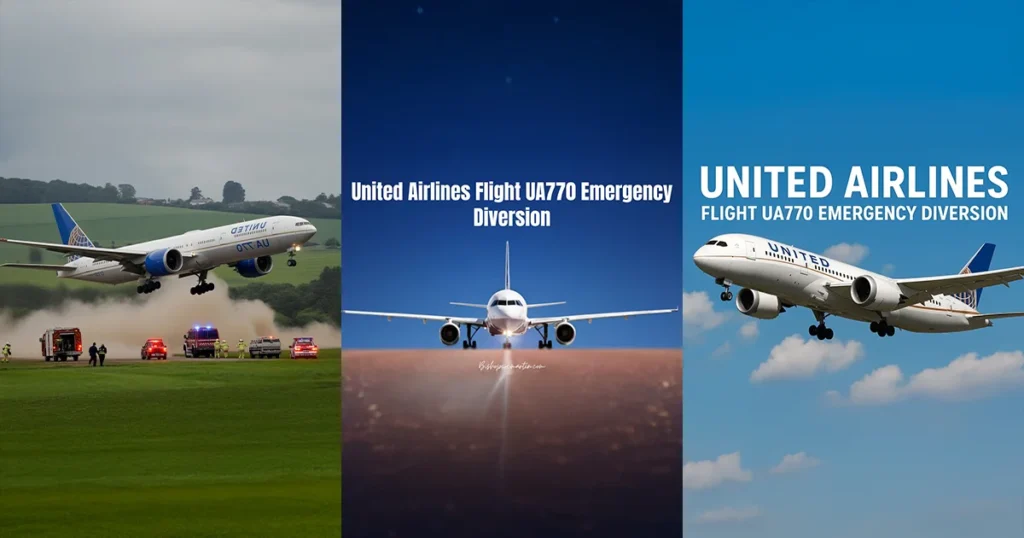Overview of United Airlines Flight UA770
United Airlines Flight UA770 operates as a scheduled service that typically departs from Newark Liberty International Airport (EWR) in New Jersey, destined for San Francisco International Airport (SFO) in California. The flight is an essential segment within United Airlines’ extensive network, connecting two major hubs on the West and East Coasts of the United States. With a route that spans approximately 2,600 miles, it is a relatively long domestic flight, typically lasting around six hours.
The aircraft typically utilized for United Airlines Flight UA770 is the Boeing 737-900ER, a versatile narrow-body jet known for its fuel efficiency and spacious cabin configuration. This aircraft can accommodate a high volume of passengers, with a standard seating capacity for around 180 individuals, depending on the internal layout. Onboard, the flight often features a mix of economy and premium seats, ensuring a comfortable journey for all passengers. On the day of the emergency diversion, the flight was reportedly carrying 160 passengers in addition to the crew members, bringing the total count to approximately 165 people on board.
Prior to the emergency diversion incident of UA770, the flight’s operations progressed normally as it ascended into the sky, passing through various air traffic control sectors. The crew had successfully completed all pre-flight checks and in-flight procedures. Nonetheless, unforeseen technical issues prompted the pilots to make the critical decision to divert. It is paramount for the integrity of flight safety protocols that such actions are taken with the utmost seriousness, ensuring the well-being of everyone aboard. The ability of the crew to manage in-flight situations effectively is crucial, as exemplified by the actions taken during the flight’s emergency diversion.
The Incident: What Happened During the Emergency Diversion
The United Airlines flight UA770 emergency diversion unfolded on a fateful day, when the aircraft was en route to its destination. Mid-flight, pilots reported a sudden and alarming situation that required immediate action. Initial indications suggested potential mechanical issues with the aircraft, prompting the crew to assess the seriousness of the situation. As they communicated with air traffic control, it became evident that an emergency diversion was necessary to ensure the safety of all on board.
Witness accounts from passengers shed light on the immediate reactions during the diversion. Many reported feelings of anxiety and uncertainty as the flight crew informed them about the decision to divert. The captain’s calm and assuring demeanor played a crucial role in managing these emotions, as passengers were advised on safety protocols for the landing. Eyewitnesses described the atmosphere inside the cabin, with some passengers showing visible concern while others remained composed, trying to make sense of the unfolding circumstances.
Environmental factors also played a role in the situation; weather conditions were unpredictable, with reports of turbulence earlier in the flight. This further complicated the decision-making process, creating a sense of urgency among the crew. Medical emergencies among passengers were another contributing factor to the United Airlines flight UA770 emergency diversion. At least one individual required immediate medical attention, which heightened the urgency of the situation during the descent.
Overall, the incident surrounding the United Airlines flight UA770 emergency diversion underscored the critical importance of safety protocols and the effective communication strategies employed by the flight crew. The collaborative efforts between pilots, cabin crew, and air traffic control exemplified the aviation industry’s commitment to ensuring the safety and well-being of passengers during unexpected emergencies.
Response and Aftermath: Handling the Emergency
On the 12th of August 2023, United Airlines Flight UA770 experienced an emergency diversion due to unforeseen circumstances. The immediate response by the flight crew was critical in ensuring the safety and well-being of all passengers aboard. Communication protocols were initiated promptly, with the captain informing the crew and passengers about the situation at hand. The crew’s training in emergency protocols came to the forefront as they maintained a calm demeanor, assuring passengers that their safety was the priority. This level of effective communication is vital during such crises and helps to mitigate panic among those on board.
Upon the flight’s emergency diversion, the crew swiftly executed evacuation procedures. Key protocols included a thorough assessment of the cabin to ensure that all passengers could exit the aircraft safely and efficiently. The flight attendants played a significant role in guiding passengers, demonstrating the use of emergency exits, and ensuring that everyone was accounted for as they disembarked. This professional handling of the situation was commendable as it reflected the extensive training that United Airlines crew members undergo to manage such emergencies.
The aftermath of the diversion required a coordinated effort from United Airlines and emergency responders on the ground. Passengers were assisted shortly after landing, receiving care and support tailored to their individual needs. United Airlines took significant steps in managing the situation post-diversion by providing accommodation, meals, and alternatives for continued travel. Disruptions, such as delays in connecting flights and the overall impact on travel plans, were addressed through a dedicated response team, ensuring efficient handling of passenger needs. The airline’s commitment to customer service during this incident showcased a proactive approach in overcoming the challenges posed by the UA770 emergency diversion.
Lessons Learned: Ensuring Safety in Future Flights
The emergency diversion of United Airlines Flight UA770 serves as a critical case study for the aviation industry, prompting a reevaluation of existing safety protocols and practices. In recent years, several high-profile incidents have underlined the importance of preparedness and agile response mechanisms in the event of in-flight emergencies. By analyzing the details surrounding UA770’s diversion, airlines can derive valuable lessons to enhance their operational frameworks and minimize risks.
One of the key lessons learned from the UA770 incident is the necessity for robust communication channels between the cockpit crew and air traffic control. Effective communication enhances situational awareness, allowing for timely decision-making that is crucial during emergencies. Airlines should consider investing in advanced communication systems and training programs to ensure that flight crews are well-prepared to handle any situation that arises. This focuses not only on the technical aspects of control but also on stress management and quick thinking under pressure.
Moreover, the implementation of comprehensive emergency preparedness training for cabin crew is paramount. Regularly conducted simulations that mimic real-life scenarios can better equip flight attendants to manage passenger safety during unexpected diversions, such as the one experienced by UA770. This training should encompass a variety of potential emergencies, fostering a proactive mindset that serves to bolster passenger confidence in the event of a crisis.
Technological advancements also play a significant role in enhancing flight safety. The integration of real-time data analysis and artificial intelligence in flight management systems can provide critical insights to pilots, allowing for quicker identification of potential hazards. By adopting new technologies that facilitate rapid data processing, airlines can improve their proactive measures against emergencies.
In conclusion, the United Airlines Flight UA770 emergency diversion highlights the need for continuous improvement in safety protocols, communication strategies, and training. By implementing these lessons, the aviation industry can strive for a safer flying environment, ensuring that both passengers and crew are well-prepared for any emergencies that may arise in the skies.


